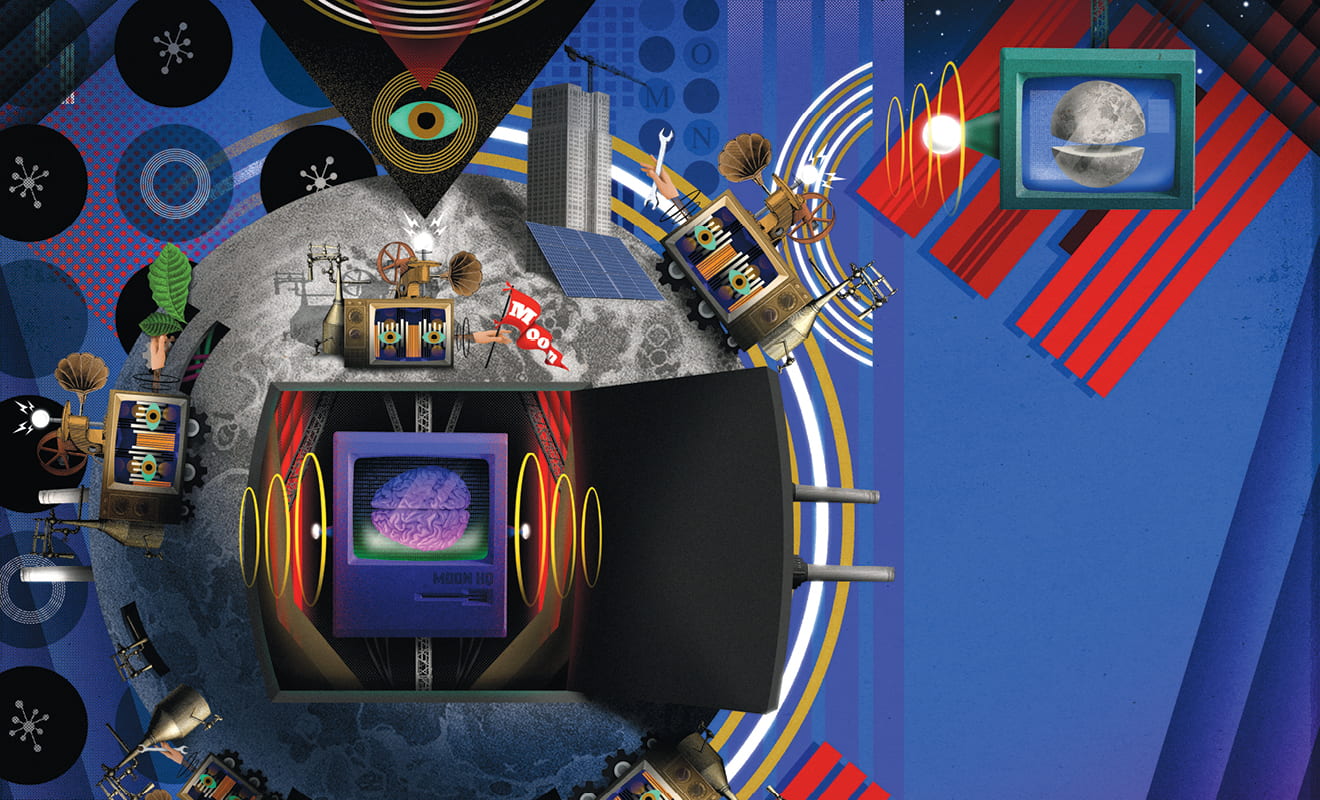Teamwork in Space
Mechanical rovers can travel through space, land on other planets, and beam extraordinary photos of alien landscapes back to Earth. But it turns out they could use a little help working together.
That’s why NASA is funding early-stage research—in a project that includes Carlo Pinciroli—to develop “swarm” capabilities that would allow teams of robots to collaborate and coordinate their efforts while exploring the moon and collecting mineral samples.
The goal is to establish decentralized coordination for mechanized explorers so that a swarm of robots could communicate with one another, assign tasks to one another, and successfully complete missions.
Carlo Pinciroli
“We want to create a common data structure, similar to a whiteboard that team members could scribble upon, so that four to 10 robots at a time could complete scientific missions established by human controllers on Earth,” says Pinciroli, assistant professor in the Department of Robotics Engineering. “The goal is to establish decentralized coordination for mechanized explorers so that a swarm of robots could communicate with one another, assign tasks to one another, and successfully complete missions, even if one or more robots deteriorates.” Pinciroli is a subcontractor on the 13-month project, which is being led by Charles River Analytics Inc. of Cambridge. The project is funded with a Phase I $125,000 Small Business Technology Transfer contract from NASA’s Lunar Exploration Program.
Charles River and Pinciroli will develop technology to enable robots to respond autonomously to unexpected situations, swarm to achieve tasks, and manage faults as vehicles degrade over time. The goal is to deploy the technology on advanced hardware platforms during future research.
Robots are poised to play an important role in future moon missions because they can explore rugged landscapes in the harsh environment of space. But the machines possess limitations: They can be damaged by dust, lose power over time, and drop signals when entering lava tubes, caves, and craters.
Enabling a swarm of robots to operate autonomously could address some of those challenges, Pinciroli says. If one robot falters in its tasks, others could take over the work.
“The robots would basically think like ants,” Pinciroli says. “They would not have a central director. They would be independent, and they would have missions to accomplish, which would be to travel to certain sites and collect resources. They would communicate with each other about their health and the status of their tasks.”



